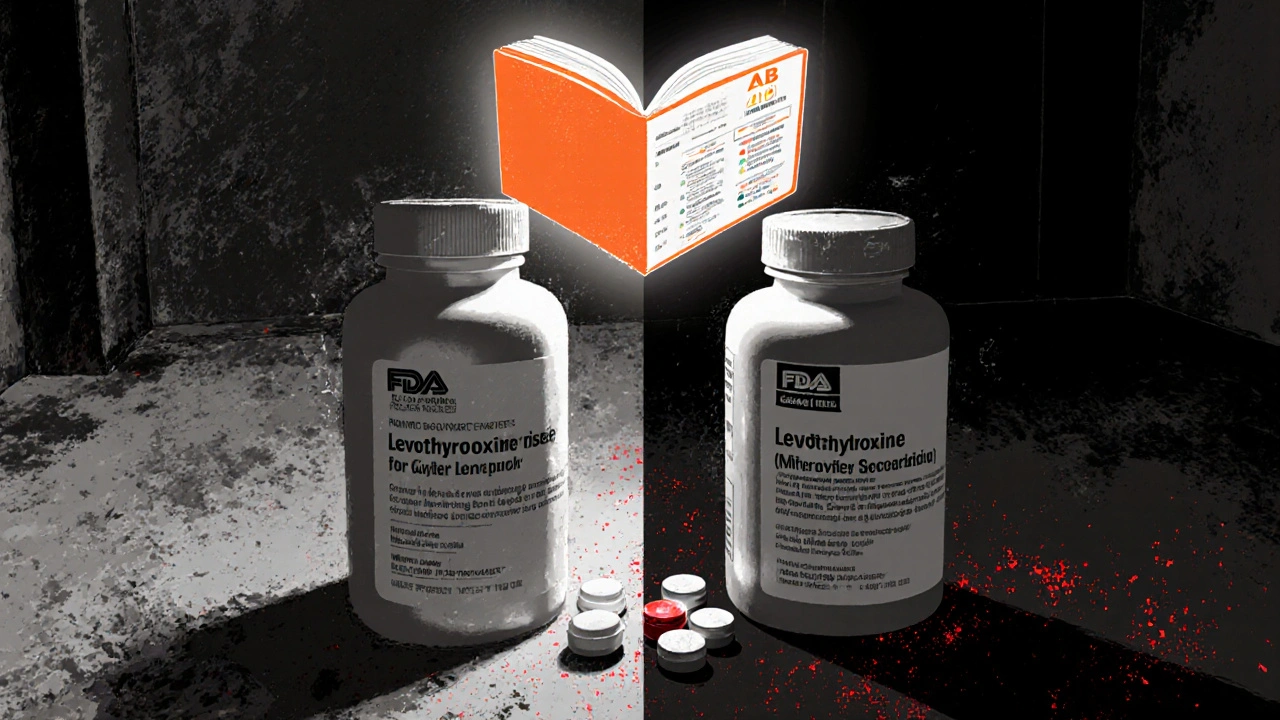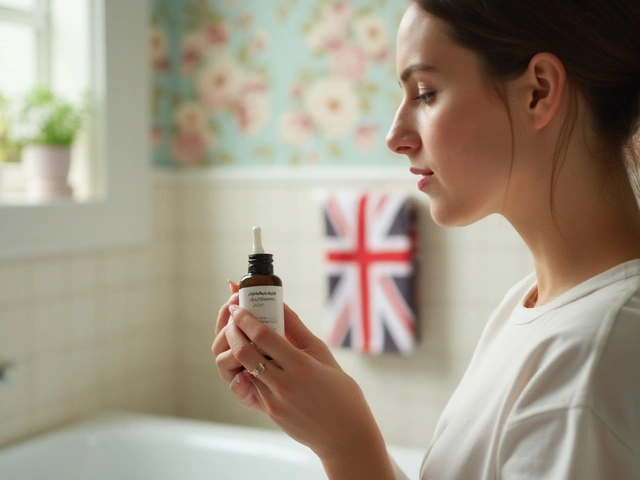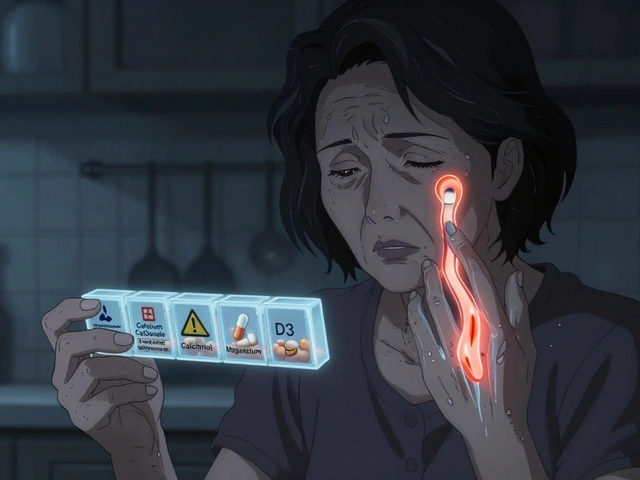When your doctor prescribes a medication, you might be handed a bottle with a name you’ve never seen before. Not the brand you recognize-like Lipitor or Synthroid-but something like atorvastatin or levothyroxine. That’s a generic. And if you’ve ever looked at your pharmacy receipt, you’ve probably noticed there are multiple generics for the same drug, each with a different manufacturer and price. So how do you pick? Is one better than another? Should you stick with the same one every time? The answer isn’t as simple as ‘cheaper is better,’ but it’s not as scary as it seems either.
What Makes a Generic a Generic?
A generic drug isn’t a copy. It’s not a knockoff. It’s legally required to be identical in active ingredient, strength, dosage form, and how it’s taken (pill, injection, etc.) as the brand-name version. The FDA demands that it works the same way in your body. That’s not a suggestion-it’s a rule. Before a generic hits the shelf, the manufacturer must prove it delivers the same amount of medicine into your bloodstream at the same rate as the brand. This is called bioequivalence.
The FDA uses strict testing to measure this. They look at two key numbers: how much of the drug gets into your blood (AUC) and how fast it gets there (Cmax). The generic’s numbers must fall within 80% to 125% of the brand’s. That doesn’t mean it can be 20% weaker or 25% stronger. It means the average difference across a group of people is tiny-often just 3-5%. For most drugs, that’s like choosing between two identical coffee machines that brew the same cup, just from different brands.
Therapeutic Equivalence Ratings: The Real Key
The FDA doesn’t just say a generic is ‘good enough.’ It gives each one a rating in the Orange Book, a public database of approved drugs. The most important rating is AB. If a generic has an AB rating, it’s been proven to be therapeutically equivalent to the brand and to other AB-rated generics. That means you can switch between them without expecting any change in how the drug works.
Some generics get a B rating. That doesn’t mean they’re unsafe. It means the FDA has found small differences in how the drug behaves in the body-maybe due to different fillers, coatings, or release mechanisms. For most drugs, this doesn’t matter. But for certain medications, even a tiny shift can be risky.
When Switching Generics Can Matter
Not all drugs are created equal when it comes to switching. Some have a narrow therapeutic index. That means the difference between a dose that works and one that’s too high-or too low-is very small. For these, consistency matters more than cost.
- Levothyroxine (for hypothyroidism): Even small changes in thyroid hormone levels can cause fatigue, weight gain, or heart problems. The FDA issued warnings in 2021 after some generic versions showed inconsistent absorption. Many endocrinologists recommend sticking with one brand or one generic manufacturer once you’re stable.
- Warfarin (a blood thinner): A slight change in blood levels can lead to dangerous clots or bleeding. Patients on warfarin are often advised to avoid switching generics unless closely monitored.
- Digoxin (for heart failure): Like levothyroxine, small changes can trigger serious side effects. Some generics have been approved as bioequivalent, but switching between them isn’t always advised.
For these drugs, the goal isn’t to find the cheapest option. It’s to find one that works, and then stick with it.

What About Price Differences Between Generics?
There are often three, four, or even five different generic versions of the same drug on the shelf. And yes, they can cost wildly different amounts-even though they’re all supposed to work the same. Why? Because manufacturers set their own prices. One might be made by a big company with lower overhead. Another might be imported from overseas and priced aggressively. A third might be newer to the market and trying to win customers.
Here’s the catch: just because one generic is cheaper doesn’t mean it’s better. If you’re taking a drug with a narrow therapeutic index, switching between generics just to save a few dollars could cost you more in doctor visits, lab tests, or worse.
For most people-taking blood pressure pills, statins, or antibiotics-the price difference is worth it. But if you’re on a drug where precision matters, ask your pharmacist: Which generic are you giving me? And is it the same one I’ve been on?
What Should You Do When You Have Multiple Choices?
Here’s a simple, step-by-step guide:
- Check the therapeutic equivalence rating. Look at your prescription label or ask your pharmacist. If it says AB, you’re safe to switch. If it says B, ask why.
- Know your drug’s risk level. Is it for thyroid, heart, blood thinning, or seizures? If yes, avoid switching unless your doctor says it’s okay.
- Stick with one manufacturer. Even if you’re on an AB-rated generic, don’t switch between different brands every refill. Your body gets used to the specific formulation. Consistency reduces risk.
- Ask your pharmacist to note the manufacturer. Most pharmacies can track which version they’re dispensing. Request that they write the manufacturer name on your receipt or label.
- Don’t panic over price. If you’re on a non-critical drug, go for the cheapest AB-rated option. But if you’re on a high-risk drug, pay a little more to keep the same one.
What If Your Insurance Forces a Switch?
Insurance companies often push for the cheapest generic. Sometimes, they’ll change your prescription without telling you. You might get a different manufacturer every month. That’s not always a problem-but for some people, it is.
If you notice new side effects after a switch-dizziness, fatigue, irregular heartbeat, or mood changes-don’t ignore it. Call your doctor and pharmacist. Ask: Did I get a different generic this time? If so, request your original version. Most insurers will allow an exception if your doctor writes ‘dispense as written’ on the prescription.

Who Should You Trust?
Pharmacists are your best allies here. They see every generic version, know the Orange Book ratings, and understand how your specific medication behaves. Don’t be shy about asking: Is this the same one I got last month? or Is this AB-rated? They’re trained to answer these questions.
Your doctor doesn’t always know the difference between generic manufacturers. But they can help you advocate for stability if your condition is sensitive. If you’re on a narrow therapeutic index drug, ask your doctor to write ‘dispense as written’ on the prescription. That stops automatic substitution.
What’s Changing Right Now?
The FDA is paying more attention to generic quality. In 2022, they tightened rules for complex generics-like extended-release pills, inhalers, and topical creams. They’re also pushing for better tracking. New legislation proposed in 2023 would require each generic manufacturer to have a unique code, so if something goes wrong, you can trace it back to the exact batch.
For now, the system works well for most people. But for those on critical medications, the details matter. And those details are out there-if you know where to look.
Bottom Line
For 90% of prescriptions, generics are safe, effective, and a smart financial choice. But for a small group of drugs-those where tiny changes can cause big problems-consistency beats savings. Don’t assume all generics are the same. Check the rating. Know your drug. Ask your pharmacist. And if you’re on a high-risk medication, stick with one version. Your body will thank you.
Are all generic drugs the same?
No. While all generics must contain the same active ingredient and meet FDA bioequivalence standards, different manufacturers use different inactive ingredients, coatings, and manufacturing processes. These can cause small differences in how the drug is absorbed. For most drugs, this doesn’t matter. But for drugs with a narrow therapeutic index-like levothyroxine or warfarin-switching between generics can affect your health.
Can I switch between different generic versions of the same drug?
For most medications, yes-especially if they’re rated AB by the FDA. But if you’re on a drug with a narrow therapeutic index, it’s better to stick with one manufacturer. Switching too often can cause fluctuations in your blood levels, leading to side effects or reduced effectiveness. Always check with your pharmacist before switching.
What does an AB rating mean on a generic drug?
An AB rating means the generic has been proven by the FDA to be therapeutically equivalent to the brand-name drug and to other AB-rated generics. It has the same active ingredient, strength, dosage form, and bioavailability. You can safely substitute AB-rated generics for each other or for the brand without expecting any change in how the drug works.
Why do some generic drugs cost more than others?
Price differences come from manufacturing costs, competition, and market timing. A newer generic might cost more because the company is still recovering development costs. A well-established one might be cheaper due to high-volume production. Some generics are imported or made by large pharmaceutical companies with lower overhead. The cost doesn’t reflect quality-just supply and demand.
Should I always choose the cheapest generic?
Only if it’s an AB-rated generic and you’re not taking a high-risk medication. For drugs like blood thinners, thyroid hormones, or seizure meds, cost should come second to consistency. Paying a few dollars more to stay on the same manufacturer can prevent serious health issues. For antibiotics or blood pressure pills, the cheapest AB-rated option is usually fine.
Can my pharmacist switch my generic without telling me?
In most states, yes-unless your doctor writes ‘dispense as written’ on the prescription. Pharmacists are allowed to substitute generics unless the prescription says otherwise. But they’re required to inform you if they switch to a different manufacturer. Always check your label and receipt. If you’re on a sensitive medication, ask your pharmacist to note the manufacturer name.
How do I know if my generic is AB-rated?
Ask your pharmacist. They can check the FDA’s Orange Book or their pharmacy system to confirm the therapeutic equivalence rating. You can also look at your prescription bottle-some manufacturers list the rating. If you’re unsure, call your pharmacy and ask: ‘Is this generic rated AB for therapeutic equivalence?’
What should I do if I feel different after switching generics?
If you notice new symptoms-like increased fatigue, dizziness, heart palpitations, or mood changes-after switching generics, contact your doctor and pharmacist immediately. Ask if your medication was changed. If so, request your previous version. For high-risk drugs, even small changes can have real effects. Don’t wait to see if it gets better.






Akash Chopda
November 25, 2025 at 00:41
The FDA is lying to us about generics